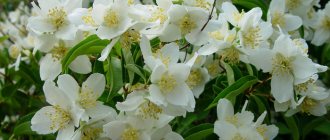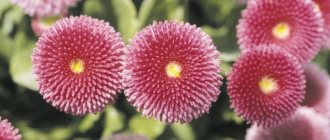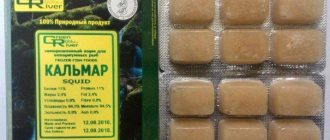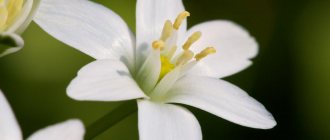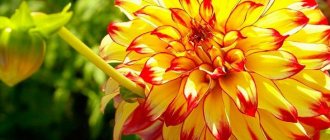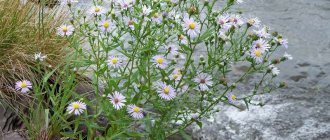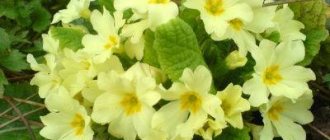Eschsolzia: varieties and varieties
Eschscholzia belongs to the Papaveraceae (poppy) family, which includes up to 10 species of annual and perennial plants. Often perennial varieties in Russian conditions are grown as annuals. The natural habitat of Eschscholzia is North America.
California poppy is a beautiful plant that can increasingly be seen in flower beds.
The height of Eschscholzia reaches a maximum of 0.5 m, while the plant has a pronounced central stem topped with flowers. The leaves are complexly dissected, bluish in color, with a waxy coating - partly reminiscent of steppe wormwood.
California poppy blooms with single simple or double flowers, the diameter of which reaches 7 cm. Eschscholzia opens its flowers only in bright sun. In cloudy weather, the bright petals fall off very quickly. The variety of colors of Eschscholzia flowers is amazing, repeating the incredible combinations of the yellow-orange spectrum. There are varieties with white and pink flowers.
Recently, breeders have developed hybrid varieties of plants with contrasting strokes and stripes on the petals for growing in open ground. Flowering lasts from June to October.
Eschscholzia turf
- Eschscholzia turf (E. caespitosa) - the plant reaches only 15 cm in height. Small bright yellow flowers with a diameter of up to 3 cm. Low-growing bushes with feathery foliage and bright flowers are very decorative.
- Eschscholzia Lobba (E. lobbi) is a low plant, reaching a height of only 18 cm. Light yellow flowers up to 2 cm in diameter. Growing this variety in mixed mixborders and flowerbeds in open ground allows you to perfectly shade viola or lobelia in blue and blue-violet tones. Planting low-growing varieties of eschscholzia with silver leaves in the rock garden helps to diversify the monotonous greenery.
Eschsolzia Lobba
Useful properties of the plant
Eschscholzia is valued by gardeners not only because of its decorative component. This plant is medicinal. Its juices, which are extracted from the ground part of the bush, contain flavonoids and alkaloids, on the basis of which infusions, medicinal capsules (gelatin) and liquid extracts are produced.
The plant has a sedative effect and perfectly relieves spasms and pain. Helps well with toothache, relieves nervous tension. Medicines containing eschscholzia are prescribed for insomnia, as well as for children suffering from enuresis.
Planting eschsolzia
It is necessary to plant the crop in open ground in the brightest sunny place. It is impossible to plant California poppy in wet, caked and soured soil. It is necessary to add a sufficient amount of quartz sand to the soil for planting. If the groundwater level is high, it is necessary to perform preliminary drainage in the beds where it is planned to plant Eschscholzia plantings.
Advice! When planting eschscholzia, do not use nitrogen fertilizers.
Plants do not tolerate transplantation well, so it is easier to sow the crop in a permanent place with seeds in the spring. Despite the fact that eschscholzia is a perennial plant, it does not tolerate cold winters. Temperatures below -5C have a detrimental effect on wintering plants. That is why the crop is grown as an annual.
Sunny California poppy loves open areas
Eschscholzia, sown with seeds in the spring, will fully bloom in June. It is allowed to sow California poppy seeds in the fall. Pre-winter sowing of Eschscholzia seeds allows you to obtain strong, hardened seedlings of the flower crop in early spring.
Growing from seeds
You can grow eschscholzia from seeds either by direct sowing in the ground or through seedlings.
How to sow seeds, when to plant
For the domestic climate, it would still be preferable to grow Eschscholzia using seedlings .
When planting seeds, do not forget that the root system of the California poppy is taproot. This means that there must be enough space in the container.
Experienced gardeners do not recommend sowing in a common container. This is due to the fact that the taproot is very easy to damage when picking.
The easiest way to plant seeds . This will save you from further picking of young plants, and it will be much easier to plant seedlings in the ground. Sowing is carried out in late February - early March.
For planting, choose medium-sized peat tablets. Before planting, they are soaked to increase in size, then placed in a plastic tray.
Using a toothpick, make a depression, place a seed in it and sprinkle with loose universal soil.
After planting, cover the tray with a transparent plastic cover or film, creating a mini-greenhouse. Plantings are placed in a warm, well-lit place, opening daily for ventilation and watering.
Growing seedlings
The first shoots will appear by the end of the second week , after which the shelter can be removed. It is advisable to slightly reduce the air temperature - it should not exceed 20 °C.
During this period, the strength of young shoots can be supported with special mineral complexes intended for seedlings.
Two weeks before transplanting into the ground, Eschscholzia seedlings begin to be hardened , exposing them for a short time to the terrace or balcony.
Plant care
Eschscholzia: planting and care - the culture does not require constant care. If you provide regular but gentle watering and a sunny location, the plant will delight you with flowering all the warm months of the year. Caring for Eschscholzia seedlings includes mulching and loosening the soil between young seedlings. Caring for the crop is not difficult, even a completely inexperienced gardener can do it.
For better health of the crop, you need to loosen the soil under it more often
Growing and care
Eschscholzia is easy to grow. In principle, it grows and blooms beautifully without watering or fertilizer. It is not necessary to grow seedlings, because the plant grows well when sown directly into the ground. He only needs the sun. When it becomes cloudy or at dusk, its flowers close.
Watering, fertilizing
Eschscholzia do not like excessively wet soil, which promotes the appearance of fungal diseases. The long root goes deep (deeper than 50 cm), due to which it draws water from the deep layers of the soil - the flower does not require frequent watering, except in severe drought.
The plant also grows well without fertilizer. You can fertilize it moderately, preferably by adding compost before planting. Although bushes grow more vigorously in fertile, nutrient-rich soil, they produce many more leaves but fewer flowers.
Eschscholzia prefer not too fertilized soil, can cope with drought, and are not susceptible to diseases and pests.
Breaking off faded inflorescences
Eschscholzia bloom most profusely in July-August, in order to prolong the intensity of flowering, faded flowers should be removed. This encourages the creation of more flower buds and longer, more abundant blooms.
Caring for Eschscholzia also involves preventing the emergence of new shoots. The plant quickly sows itself - it can “scatter” throughout the garden. Therefore, it makes sense to remove new plants or mature faded plants before the seeds mature.
Diseases and pests
Eschscholzia practically does not get sick and pests do not like it. Sometimes aphids appear on young shoots.
Only in rainy summers and in partial shade can the plant be affected by the fungus. Then the stems and leaves turn black and may rot. To prevent water from standing in the ground, it is worth squeezing flowers into elevated places or creating drainage.
During prolonged periods of heavy rain, the plant is susceptible to fungal diseases and falls out en masse. In wet weather, the plant can be affected by:
- Powdery mildew - symptoms appear as spots covered with powdery, cottony white mycelium. Affected leaves wrinkle and curl downward. Most often found in humid and warm summers. Infected parts of plants should be removed when the disease progresses, it is better to use a chemical agent (Topsin, Signum).
- Downy mildew - red or brown irregular spots appear on the top of the leaf and a white fluffy coating on the underside. It is better to spray infected plants with a chemical (Topsin).
Diseases and pests
In hot, dry summers, spider mites can settle on the plant. This pest can quickly ruin the appearance of the crop and even destroy Eschscholzia. Pest control measures include spraying infected plants with systemic anti-mite preparations. The treatment should be repeated after 7-10 days, when new offspring of ticks hatch from the eggs.
Ticks attach to the bottom of leaves, so be sure to spray with medications under the leaves of plants.
In addition to spider mites, the bean aphid is a pest of Eschscholzia; special anti-aphid preparations will help destroy the pests.
Spider mite
Overwatering the soil can cause Eschscholzia roots to rot. Damaged plants should be removed from beds and flower beds.
Timing for sowing Eschscholzia seedlings
The timing of planting Escholzia seedlings is in March.
You need to choose the time when you plant the crop, taking into account the climatic characteristics of the place where you live. For example, in the southern regions you can sow at the very beginning of March. For residents of the Middle Zone, it is optimal to plant seeds at home in mid-March. But in Siberia and the Urals it is optimal to plant at the end of March.
By the way! When choosing a time, you can focus on the Lunar calendar 2022:
- Favorable days: in January: 1, 10, 11, 15, 16, 19, 20;
- in February: 7, 8, 12, 13, 14, 15;
- in March: 10, 11, 15, 20, 21, 24, 25.
- Unfavorable days: in January: 2, 18th;
- in February: 1, 16;
- in March: 2, 16, 17, 18, 31.
Eschscholzia: combination with other plants
California poppy is an ideal plant for a Moorish lawn. The plant goes well with lawn grasses, clover, cornflowers, flax, cloves and other crops that make up the lawn carpet.
On the alpine hills, Eschscholzia complements compositions of flowering plants. Eschscholzia looks especially decorative with low-growing annuals: iberis, lobelia, purslane.
Eschsolzia in landscape design
The plant is ideal for decorating flower beds and garden beds.
Care after flowering
After the eschscholzia has bloomed, the bush still requires a little attention from the gardener.
Collecting seeds
You can collect California poppy seeds by placing canvas bags over the buds that are ready to bloom .
Then the bags and their contents are cut from the stem and the seed pods are removed. The boxes are opened, the seeds are poured onto paper and dried well before storing.
Preparing for winter
Unfortunately, Eschscholzia does not survive in the harsh Russian winters . Therefore, the bushes are cut close to the ground and the roots are dug up.
Instead of collecting seeds for storage, you can allow them to disperse by self-sowing. Then next year a new viable shoot will sprout.
Eschscholzia varieties: photo
Outdoor care
Although Eschscholzia is considered an unpretentious crop, it should not be left unattended in the flowerbed; basic care must be provided.
Watering
The flower requires moderate watering. If it rains regularly in the summer, then there is no need to water the plant at all. In the dry months, the soil is moistened minimally, avoiding waterlogging and stagnation of water. Eschscholzia has long roots and it can easily absorb moisture from the deep layers of the soil.
Feeding and fertilizer
In order for the plant to bloom profusely and for a long time, it needs regular feeding.
Mineral fertilizers should contain phosphorus, potassium, and nitrogen. The first time fertilizing is applied during planting in the ground. The second time - after 3-4 weeks. Important! Fresh organic matter cannot be used as fertilizer; it can burn the roots. You also need to apply nitrogen with caution; it should not be in excess. As soon as the buds appear, stop feeding.
Loosening the soil
This procedure must be carried out regularly. Eschscholzia roots are taproots, go deep into the ground and require oxygen. If there is a lack of air, the flower begins to hurt and may die.
Bloom
Eschscholzia blooms for a long time. Each flower blooms for 3-5 days and fades. The following flowers bloom behind it. This is a continuous process that, under favorable conditions, can last until frost. Dried inflorescences must be removed immediately so that the bush looks decorative. This also prevents self-seeding. You only need to leave the flowers from which you plan to collect seeds.

